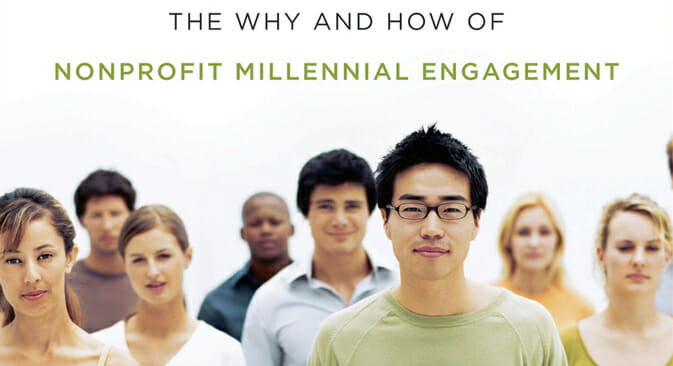Denise McMahan is a guest contributor for Nonprofit Hub, and is the founder and publisher of CausePlanet.org where nonprofit leaders devour Page to Practice™ book summaries, author interviews and sticky applications from the must-read books they recommend.
_____________
 “There is a disconnect between the way [Millennials] give and the way they are being cultivated as donors,” says Saratovsky and Feldmann, authors of Cause for Change: The Why and How of Nonprofit Millennial Engagement. The authors further explain that, “Even though Millennials are the next generation of donors and constituents, leaders spend far more resources focused on maintaining their existing supporters rather than trying to cultivate new ones…”
“There is a disconnect between the way [Millennials] give and the way they are being cultivated as donors,” says Saratovsky and Feldmann, authors of Cause for Change: The Why and How of Nonprofit Millennial Engagement. The authors further explain that, “Even though Millennials are the next generation of donors and constituents, leaders spend far more resources focused on maintaining their existing supporters rather than trying to cultivate new ones…”
The authors suggest three areas on which to focus with Millennial giving:
-
Impulsive giving habits (keep it simple and compelling since so many causes are competing for their attention.)
-
Innovative uses of mobile technology (Millennials connect with organizations through their mobiles and sign up for events but they may not necessarily give.)
-
Strong preference for event- and peer-based giving (e.g., spreading the word about a walk-a-thon, giving platforms like Razoo, charity: water’s birthday program where you can donate money instead of spend it on a birthday gift, crowdfunding where large groups pool their resources together.)
Due to social media and Millennials’ focus on these connections listed above, we are seeing several shifts in peer influence in the nonprofit world according to Saratovsky and Feldmann:
1. Donors and supporters are increasingly relying on referrals and guidance from friends, family and coworkers to make decisions, while Millennials are relying even more on their networks and sometimes the opinions of strangers.
2. Individuals are organizing as “free agents,” or on their own outside of the organization.
3. Direct communications from nonprofits are less impactful than in years past.
4. Nonprofits are finding new ways to tap the most vocal supporters outside their core networks to become active supporters of their causes. These supporters, or peer influencers, may even be more important than your brand. To engage them, you must talk to them in relation to their stories and passions, not yours. Then, allow them to relate your message authentically in their own terms to engage with an audience your organization has not or cannot reach.
Nonprofits need to embrace these free agents despite their possible lack of expertise because Millennials will listen to them. Peer influencers establish trust, exchange ideas and information to help people (reciprocity), and demonstrate relevance. You can embrace peer influencers and make them work for you with the following hints the authors suggest:
1. Make your website and landing pages easy to read and access or the influence will not work.
2. Give permission for your community to report back to you.
3. Bring the influencers into your work so you can work together and you know the message they are sending.
4. Create opportunities for influencers to be creative and recognize their efforts.
5. Help the influencers grab and use information from your website.
6. Monitor how your influence tools are used (retweets, etc.).
7. Help your staff understand and leverage the power of influencers.
Spreading Ideas Among Peers
Saratovsky and Feldmann present many examples of peer influencers using social media tools to spread ideas more quickly and efficiently. One in particular is the 2012 movement against the Stop Online Piracy Act and the Protect Internet Privacy Act. Through petitions (4.5 million signatures), two million tweets and eight million people looking up their representatives to voice their concerns, the bills were defeated. The influencers worked with and around Wikipedia, Google and Reddit to discuss and protest the cause.
Leveraging Fundraising Among Peers
Another example the coauthors explore is how Millennials use their influence to leverage collective fundraising among their peers. In 2007, two passionate young men looked at their annual giving and realized they could have more impact if they gathered friends and encouraged everyone to start with just one percent. And so, together with 30 friends, they launched the One Percent Giving Circle. Today, the One Percent Giving Circle has grown to become the largest online giving circle in the U.S.
When peer influence and free agents are at work among Millennials, it appears there’s not much they can’t accomplish. Millennials’ unique approach to advocacy and fundraising demand nonprofits accommodate these preferences if they want to nurture more of this behavior. A one-size-fits-all approach to constituency engagement is no longer appropriate for nonprofit leaders in light of Millennials’ unprecedented perspective. Early results in next gen advocacy and fundraising demonstrate that Millennials will change the world around them using new methods, collective behavior and the power of the free agent.






